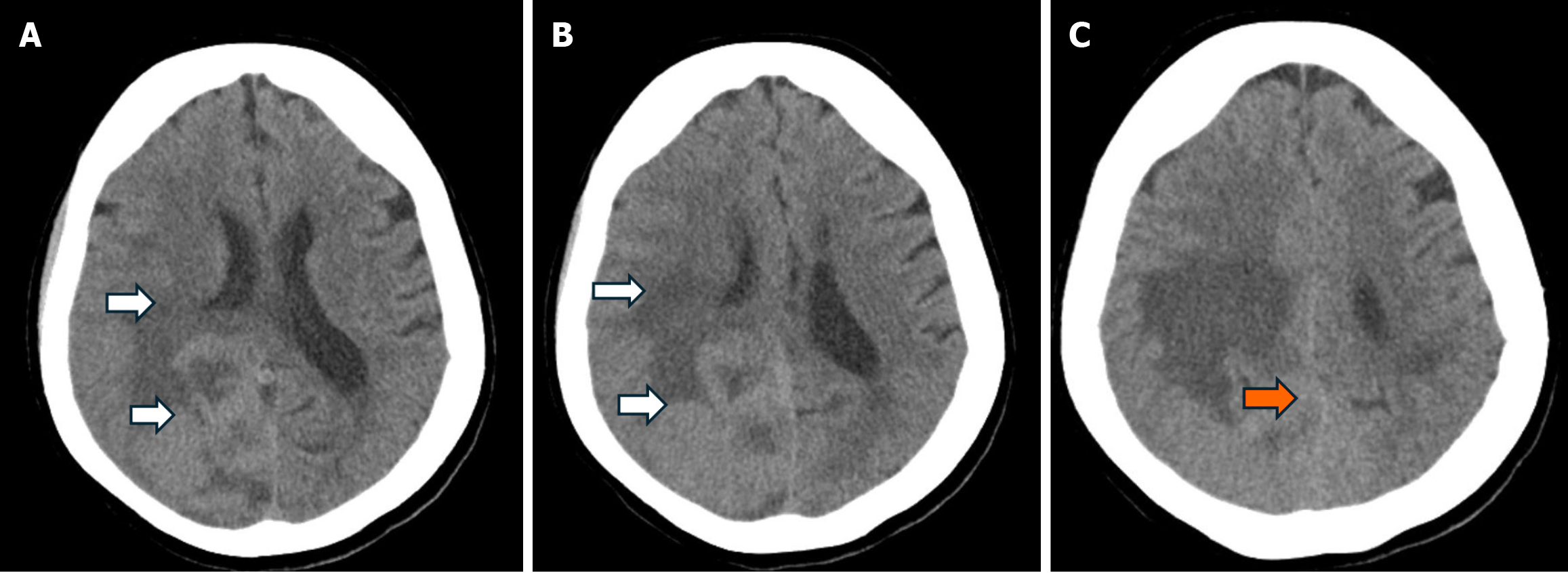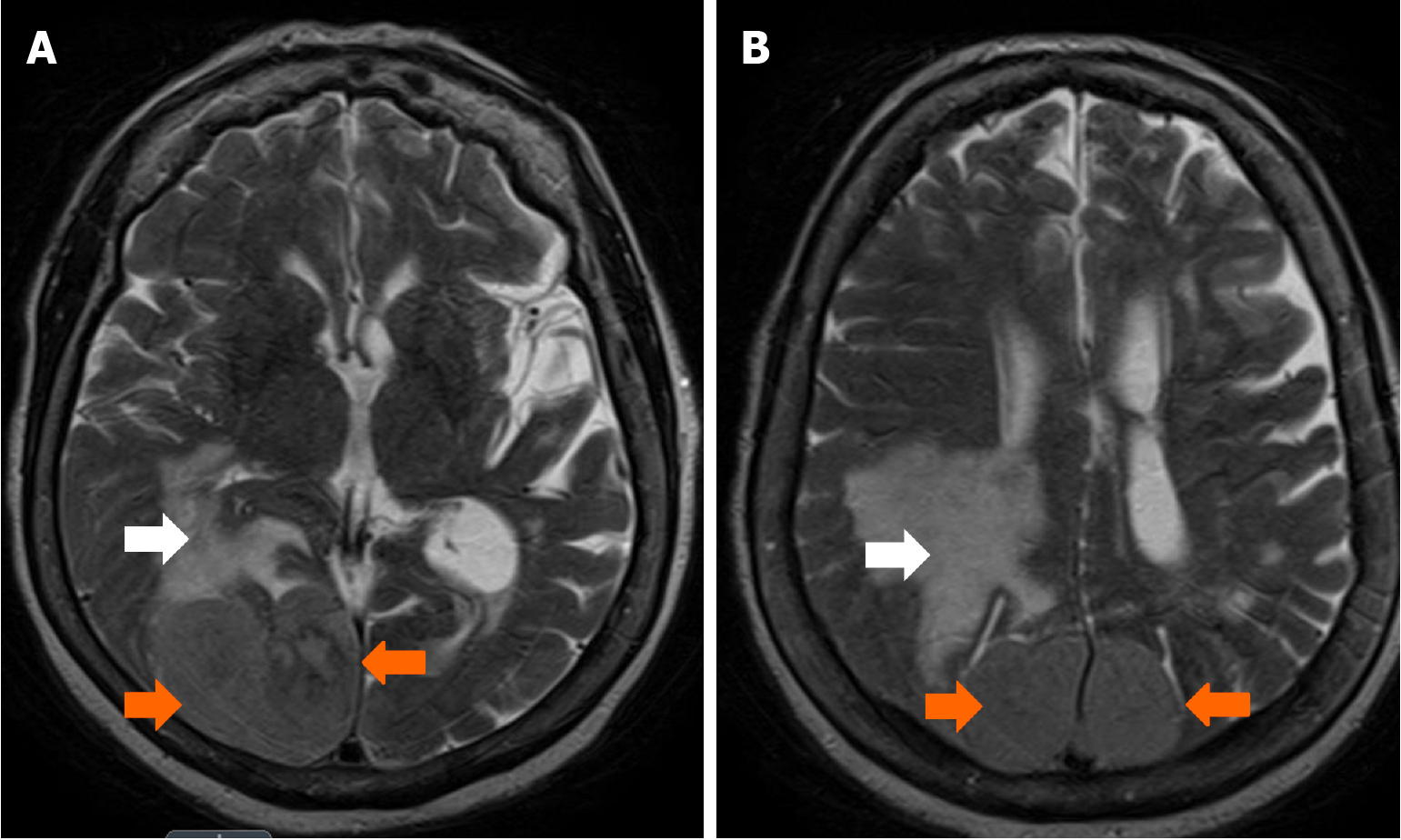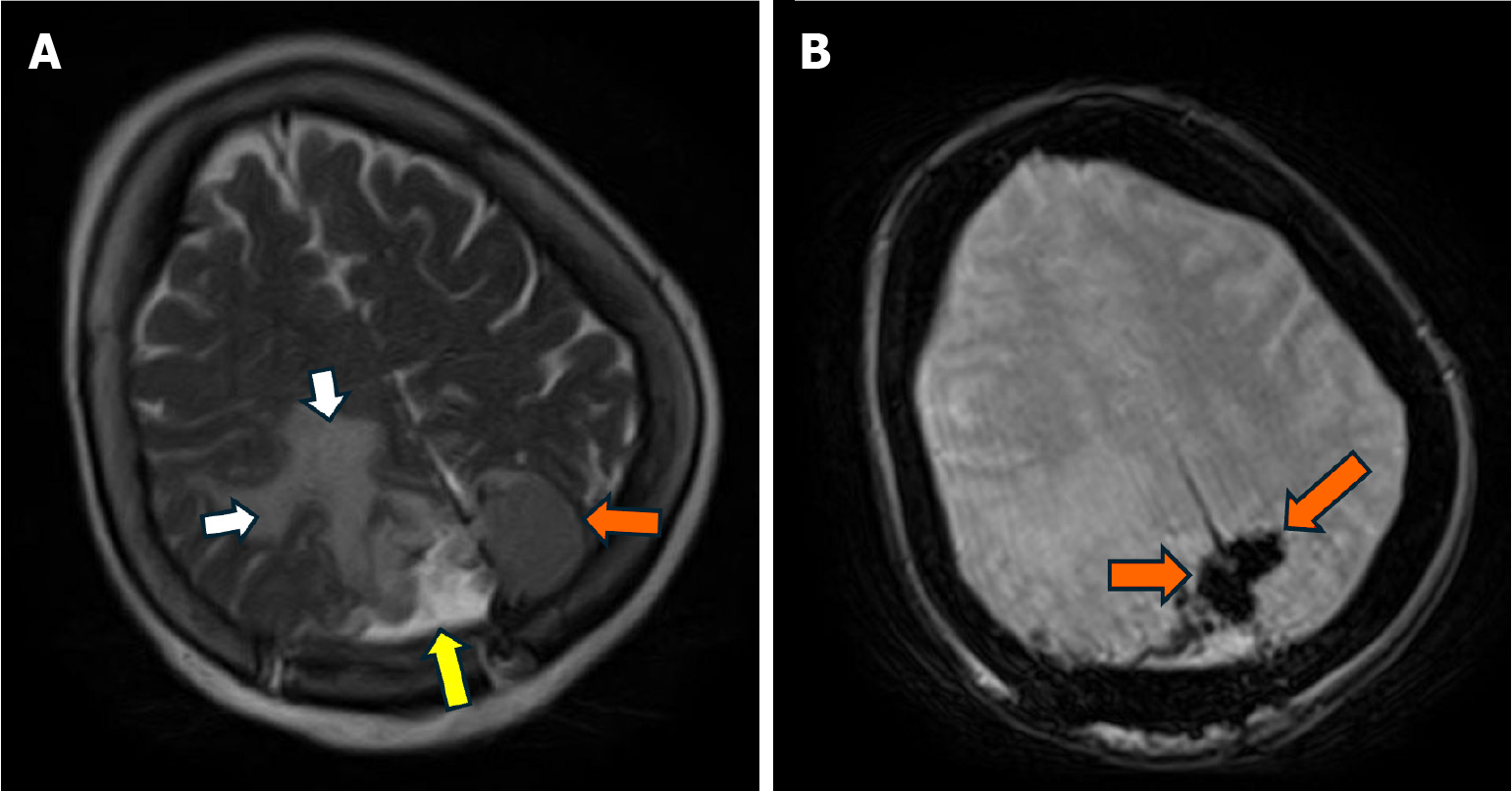Copyright
©The Author(s) 2025.
World J Clin Cases. Sep 6, 2025; 13(25): 108429
Published online Sep 6, 2025. doi: 10.12998/wjcc.v13.i25.108429
Published online Sep 6, 2025. doi: 10.12998/wjcc.v13.i25.108429
Figure 1 Computed tomography cervical spine, chest, pelvic and knee X-rays were unremarkable.
A-C: Computed tomography head without contrast demonstrating a moderately large area of vasogenic edema (white arrows) seen in the posterior right parietal lobe extending into the right temporal and occipital lobe.
Figure 2 Magnetic resonance imaging.
A and B: Magnetic resonance imaging head w/wo contrast demonstrating vasogenic edema (white arrows) and a large 6.6 cm extra-axial, enhancing mass along the posterior aspect of falx bilaterally (orange arrows).
Figure 3 Magnetic resonance imaging.
A and B: Postoperative magnetic resonance imaging brain post-resection with some residual tumor remaining in the left and right posterior parietal parafalcine region (orange arrows). Postoperative blood products and decreased vasogenic edema indicated by yellow and white arrows, respectively.
- Citation: AlSabea N, Syeda S, Gubran M, Gibatova V, Sharma R, Aswani A. Atypical presentation of a large posterior falx meningioma involving the parafalcine region in a 78-year-female: A case report. World J Clin Cases 2025; 13(25): 108429
- URL: https://www.wjgnet.com/2307-8960/full/v13/i25/108429.htm
- DOI: https://dx.doi.org/10.12998/wjcc.v13.i25.108429















